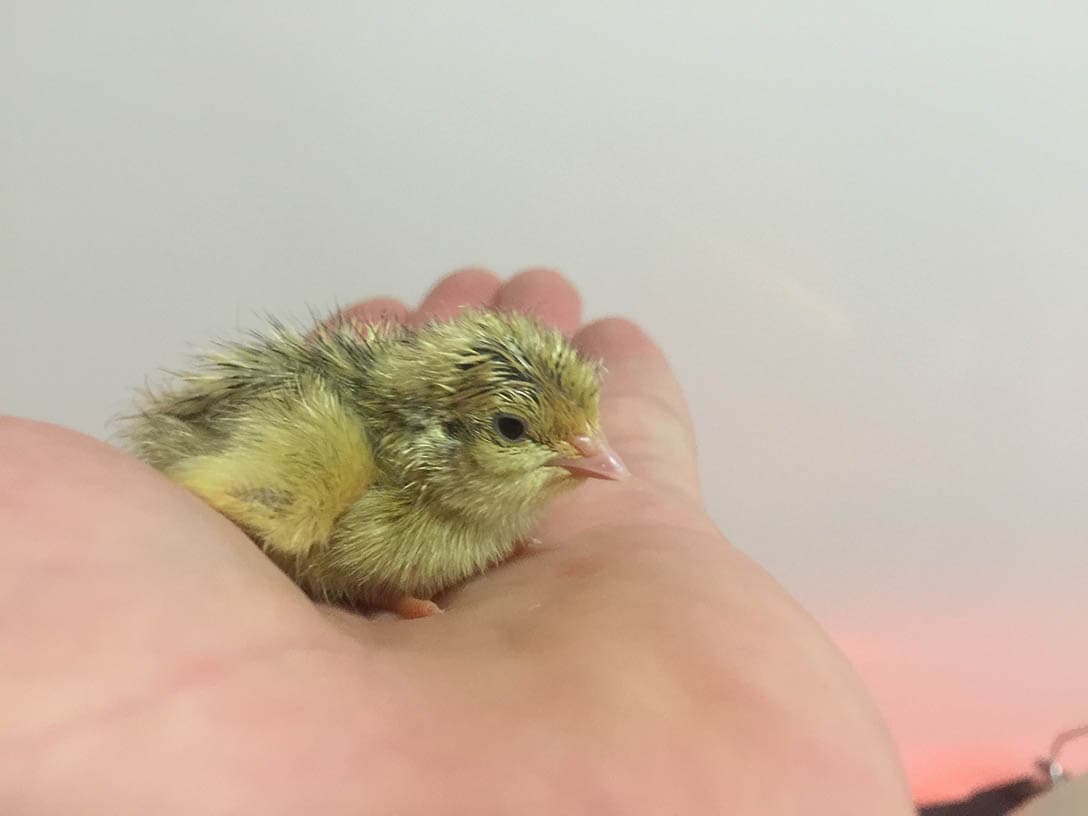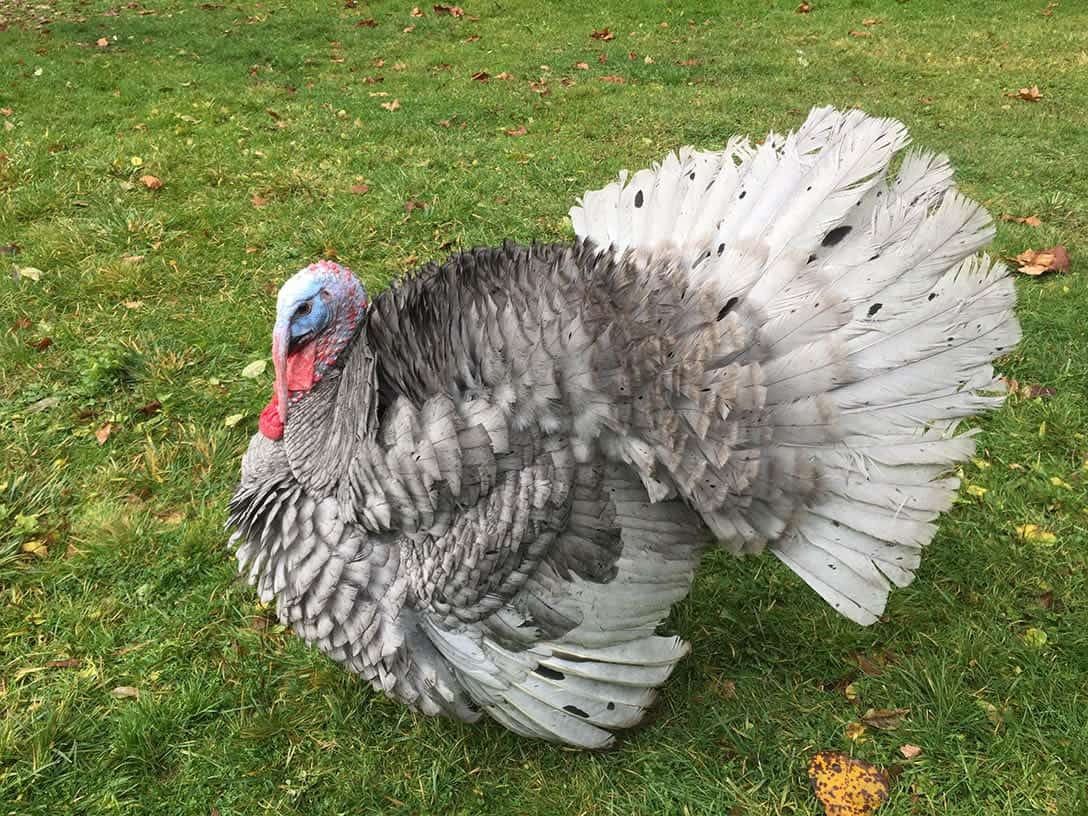When it comes to turkeys, the Slate turkey is an absolutely beautiful one. Known for its slate blue color, this heritage turkey is popular for use in exhibitions. It’s also been used for meat (said to be delicious!) but rarely for egg production. However, these lovely birds are seemingly quite rare and considered endangered.

Quick Facts about the Slate Turkey
| Breed Name: | Slate or blue slate |
| Place of Origin: | North America |
| Uses: | Meat, egg laying, exhibition |
| Tom (Male) Size: | 23 lbs |
| Hen (Female) Size: | 14 lbs |
| Color: | Solid to ashy blue |
| Lifespan: | 5–9 years |
| Climate Tolerance: | Almost all climates |
| Care Level: | Easy |
| Egg Production: | Poor |
Slate Turkey Origins
Early texts say that the Slate Turkey came about from a cross between a Black turkey and a White turkey, but there’s no genetic evidence to back that up. There’s also a theory that this breed came about as a cross between a Spanish Black turkey and a Black Norfolk (or a Black Norfolk and an Eastern Wild). No one knows for sure, though, where or why the Slate turkey came into being. We only know that it originated in North America.


Slate Turkey Characteristics
Slate turkeys are generally known to be quite docile and gentle (hence, why they are used as pets). They can also be quite friendly! However, the toms can become aggressive and even territorial if you aren’t careful. For the most part, these birds are easy to tame, though, so you really shouldn’t have many problems handling them.
They’ll spend a large chunk of their time roaming the yard searching for food, meaning with this turkey, they’ll mostly feed themselves while you supplement a little with turkey feed. The Slate turkey also doesn’t require grooming, though you should keep an eye out for bug infestations.
This bird will grow to a fairly reasonable size, which is why they are so excellent for meat production. However, their egg-laying production isn’t really anything to write home about. You can get some eggs from this breed, but you’re likely better off not having egg-laying be your main reason for keeping this turkey.
The Slate Turkey was recognized as a standard breed by the American Poultry Association in 1874.
Uses
The primary uses for a Slate turkey are meat and exhibition, though some also use them for egg-laying or as pets.
When it comes to the meat of the Slate turkey, they are said to produce more dark meat than white meat—meat that is extra tasty. The Slate turkey’s egg production is poor as they mostly only lay in the spring and summer. Egg sizes range from large to extra-large, with eggs being a cream color featuring brown flecks.
Appearance & Varieties
Slate turkeys are medium-sized turkeys when fully grown. Their main coloring—a blue color ranging from solid to ashy—came about due to two genetic mutations. One mutation is recessive, while the other is dominant, with both producing the blue slate color but in different shades. Hens are typically a lighter shade than toms. These turkeys might also have some black flecks on their feathers; however, it’s considered a defect if they have white or brown flecks.
Wattles, throats, and heads range from red to bluish-white, while beaks are horn-colored. Beards are black, eyes are brown, and the toes are pink. Though less documented than other turkeys (meaning this breed tends to have more variables in coloring), they usually come in three color phases. These include blue with black flecks, completely black, or completely blue-gray.
Population
Unfortunately, the population of Slate turkeys has been steadily dwindling. In fact, these heritage turkeys are considered quite rare and globally endangered. They are currently on the watch list of the American Breeds Livestock Conservancy. Some experts believe these turkeys are getting quite close to extinction.

Are Slate Turkeys Good for Small-Scale Farming?
Slate turkeys would be good for small-scale farming since they are easy to care for and raise. They don’t require much—just enough to eat and a safe place to stay for the most part. However, since these turkeys are so rare, it may be difficult to acquire one. You can find hatcheries that sell Slate turkeys, but there may only be a small amount available.

Conclusion
Though rare and endangered, the beautiful Slate turkey can still be an excellent addition to any farm (if you’re able to get your hands on one). They produce plenty of meat and make for wonderful exhibition birds as they come in a variety of shades and colors. They even make lovely pets!
Featured Image Credit: Amy israel, Shutterstock
